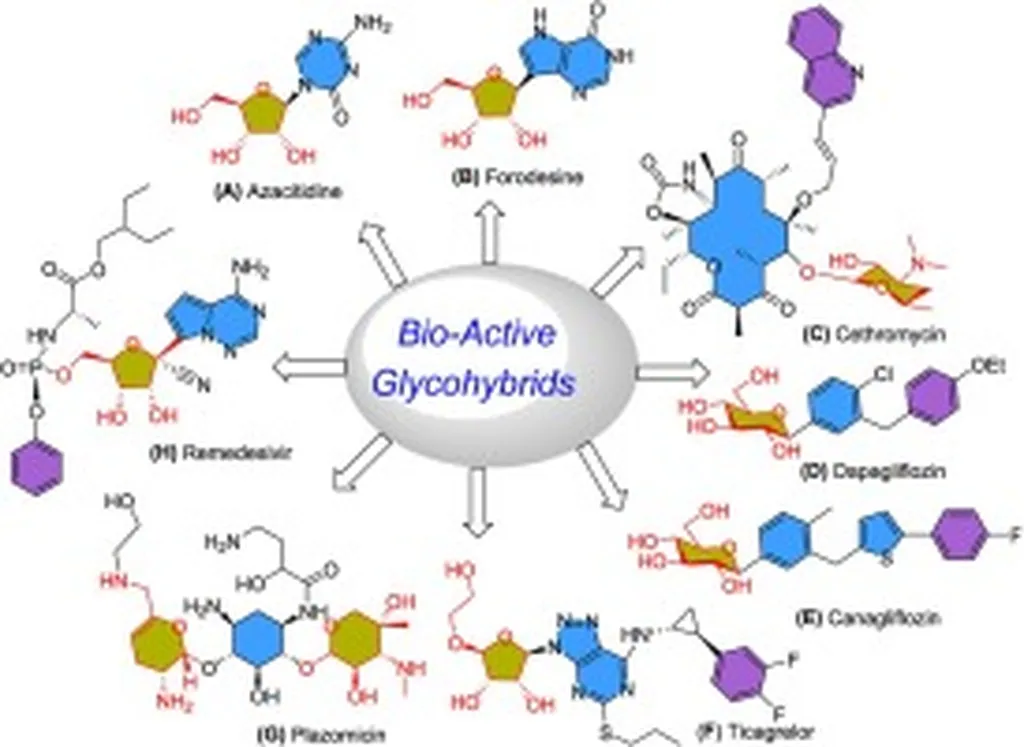In the bustling world of carbohydrate chemistry, a quiet revolution is underway, one that could ripple through the energy sector and beyond. Researchers, led by Jyoti Dahiya from Guru Gobind Singh Indraprastha University, are harnessing the power of triazoles to create versatile compounds known as glycohybrids. These aren’t just any compounds; they’re multifunctional, stable, and brimming with potential applications, from medicine to materials science.
The secret lies in ‘click chemistry,’ a method that allows scientists to join sugars to other molecules efficiently and sustainably. “The beauty of click chemistry is its simplicity and efficiency,” Dahiya explains. “It’s like a molecular Lego set, allowing us to snap together complex structures with ease.”
The implications for the energy sector are intriguing. Imagine materials that can self-assemble, sensors that can detect and respond to changes in the environment, or even new types of biofuels. The glycohybrids could potentially be used to create more efficient and sustainable energy storage systems, or to develop new catalysts for energy conversion processes.
But the potential doesn’t stop there. These glycohybrids have shown promising biological activities. Some have exhibited strong antimicrobial and antifungal properties, while others have shown potent anticancer activity. One compound, a cationic chitosan derivative with triazole and quaternary ammonium groups, has demonstrated strong antifungal and antioxidant properties. This could lead to new treatments for infections and diseases, reducing the need for antibiotics and other medications.
The research, published in the journal ‘Chemistry and Materials’ (translated to English as ‘Chemistry and Materials’), also highlights the use of these compounds in materials science and sensing. This could pave the way for new types of sensors that can detect and respond to changes in the environment, or new materials that can self-assemble and repair themselves.
However, Dahiya cautions that there’s still work to be done. “While we’ve made significant progress, we need to focus on designing more complex structures, using greener synthesis methods, and addressing challenges like bioavailability and stability,” she says. “We’re at the beginning of a exciting journey, and the future of glycohybrids is bright.”
As we stand on the brink of this new era, one thing is clear: the humble triazole is set to play a starring role in the future of carbohydrate chemistry, and the energy sector would do well to take notice. The potential is vast, and the possibilities are as limitless as the human imagination. The question is, how will we harness this power to shape the world of tomorrow?

